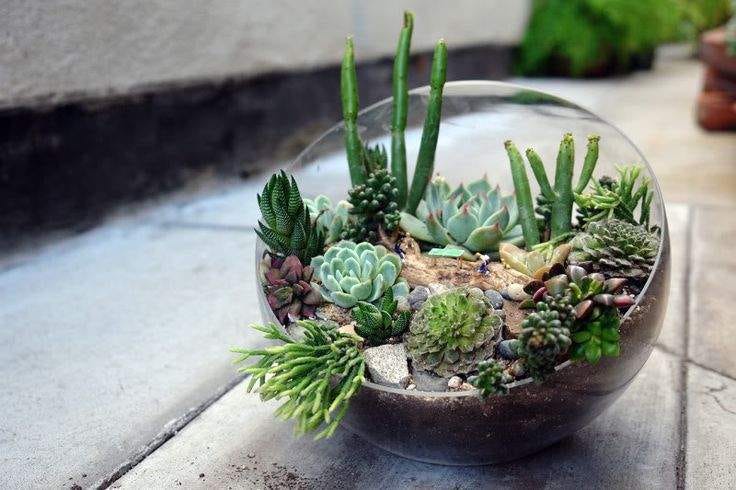Hi! I’m journalist Caroline Delbert and this is The Toolkit from Robotics & Beyond 501(c)3. Our goal every Tuesday is to give you some videos, projects, and products that help kids (and parents) get inspired by science, technology, engineering, math, and creative design.
This week in issue 13 we’re going to talk about succulent plants. These hardy plants, like aloe and cactuses, have adapted over millions of years to protect themselves from heat and store water as efficiently as possible. And today, scientists are studying how plants and animals survive in order to design better micromaterials.

The Science of Succulents
Think about a scene from a movie or TV show where a character realizes they’re stranded in the desert. Then the show cuts to an extreme shot pointed directly at the sun, a pulled out shot of how the desert extends as far as the eye can see, and a sound effect of . . . I’m not sure what kind of bird, but a sound effect of its piercing cry is in every scene like this.
Sometime in Earth’s past, plants in different regions faced their own versions of this dramatic moment. Evolution doesn’t have any intentionality in the sense of a reckless TV hero pulling out a rapidly emptying canteen, but plants with succulent mutations could survive and then spread their genes around the desert. One of the key ways involves how they make nutrition.
We learn about photosynthesis in school, and succulents do a version of photosynthesis that’s modified for their more extreme climates. This mechanism is called crassulacean acid metabolism, and it’s inspiring scientists around the world.

Ages 5-8: Make a Terrarium (Activity)

NASA Kids has a great tutorial on making a terrarium using tiny succulents or mosses and ferns, depending on the ecosystem you want to think about — dry or moist. There’s a cool causality in how succulents work today, and this is true of many organisms that have evolved in a specialized way. Cactuses and other desert plants had to adapt to the extremely dry weather, and that means they can’t cope with other kinds of weather. They evolved in a way that represents opening one door and closing another, and that brings limitations. It’s like choosing what to eat for dinner: by making one decision, you’ve also chosen not to make many other decisions.
Ages 8-12: What Do Desert Plants Do Differently? (3 minutes)
This illustrated video from Nick at Sci-Wise goes through the basics of how a cactus, for example, collects water and then protects itself from predators who want to consume it for water. That involves a thickened, waxy skin covered in defensive thorns. Other plants have narrow leaves so there’s less surface area for water to be heated and evaporated away. And finally, Nick explains how tumbleweeds—another classic of TV desert scenes—is really only rolling around until it gets rained on. Then, like a Magic Animal Growing Capsule, it’s activated by water and becomes a green plant again.
If you’re curious and want to go a step further, here’s a neat paper and press release about some researchers who tracked the cactus back to a family of plants where they believe the cactus originally split off and began evolving.
Ages 12-15: Recent Succulent Research
Experts have always studied succulent plants, but climate change has pointed many of them in a more concrete direction — instead of studying more abstract ways plant structures could improve other kinds of engineering, they’re looking for ways to add cactus or aloe genes into regular crops, for example, or engineer thicker, water-storing leaves in regular plants. In the near future, we might need drought protection the same way we use pesticides today.
Scientists who design metamaterials are using ideas from nature to make tougher, more resilient, more reactive coatings, for example. In one paper, researchers look at succulent seeds, which are tough and strong but still flexible — after all, the sprout inside still has to be able to punch through. In some other research, the way aloe folds its cells to protect them could be adapted to other plants.
(Last week’s newsletter was: Using new platforms to create simple video games)

Forward this email to anyone who you think might enjoy it!
Get in touch: Contact us at toolkitnewsletter@gmail.com
Wow that’s cool!
I just watched Jurassic Park again (it’s on U.S. Netflix!), and it sent me back to this video from March about how “animal sounds” are made for movies. Hint: there are coconuts.

